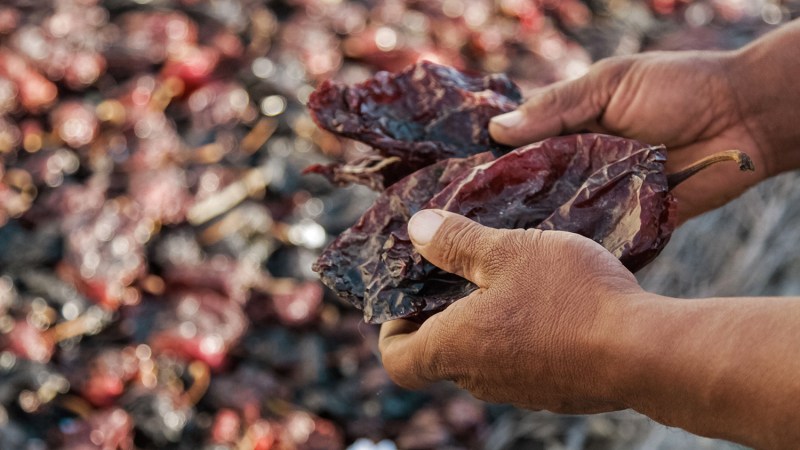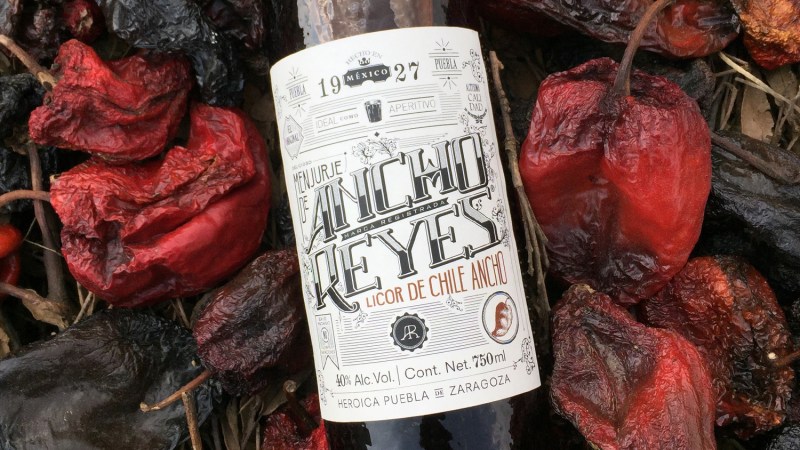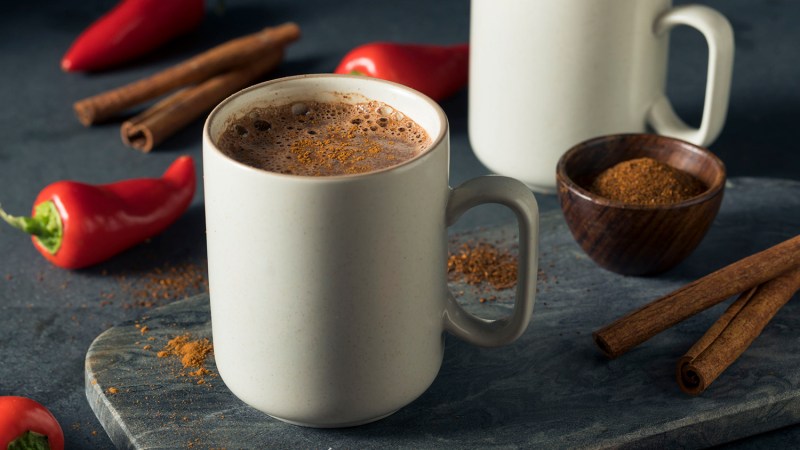Let’s take a little trip back in time. It’s the 1920s and we’re in Puebla, Mexico, a village located between Veracruz, the port city where all Europeans began their conquest, and Mexico City. The dominant alcoholic drinks at the time were those of the Europeans — spirits like cognac that were brought from across the ocean. Not everyone could afford those, though, and even if they could, that didn’t mean they necessarily did. If you couldn’t or didn’t want to consume those drinks, the other option was — as people have done for time immemorial — to make your own.
During that era, the range of ingredients was limited — you had to use what grew around you. You couldn’t go to the mercado and get an out-of-season fruit shipped in from around the world (could you imagine if Amazon Prime was around in the 1920s, though?). For the people of Puebla, the local ingredient was the poblano pepper. Poblano, when left to sun dry for fifteen days, becomes the ancho pepper, which was — and still is — the backbone of many traditional Mexican dishes.

The Reyes family resided in Puebla and they were the only ones to use the pepper, the signature crop of Puebla, in their house-made spirit. Thus, Ancho Reyes was born.
Well, sort of.
The Reyes family are not the ones who are creating the present-day product. Ancho Reyes Chile Liqueur (and the newer Ancho Reyes Verde) are reinterpretations of what the Reyes family would’ve made in the 1920s. While there were no set recipes, Dr. Ivan Saldaña (who also helped found Montelobos Mezcal) says that they worked through a variety of documents and sources to create what they believe would be an accurate facsimile.
“This is not a product that we created, this is a product that we were lucky to bring back from the 1920s in Puebla, Mexico,” says Moises Guindi, brand owner and creator of Ancho Reyes Chile Liqueur. (Guindi is also the creator of Milagro Tequila and a founder of Montelobos Mezcal.)
For each batch of Ancho or Ancho Verde, master distiller Lupita Garcia works with local farmers to select the best peppers (the poblanos are hand-picked picked between August and October). If the peppers are destined for Ancho, they are then dried. The peppers, when ready, are macerated in a neutral cane spirit that is sourced from nearby Veracruz. The peppers sit in the spirit for six months before each batch is ready. Just how many peppers go into each batch is Garcia’s secret. Once the maceration is done, the product is blended with other batches to ensure the same level of flavor and spiciness in every bottle.

At 40 percent ABV, the level of alcohol in Ancho is higher than most liqueurs, but this is intentional. “The higher proof serves as a vehicle to open up your appetite in a very nice way,” Guindi says.
Like other aperitifs, Ancho Reyes and Ancho Reyes Verde are great on their own. A quick shot before a meal starts you on the right foot. Also like other aperitifs, both Ancho products shine in cocktails.
Depending on what flavor you’re looking for, you can go either way. Ancho Reyes Verde is bright, fresh, and herbal. You can use it in citrusy drinks for a spicy kick. The original Ancho, on the other hand, has dried fruit, leather, and tamarind notes that come from the sun-drying process. The flavor is richer, sweeter, and spicier, and perfect for pairing with darker spirits or hot chocolate.
Speaking of hot chocolate, here is a recipe to get you started.

Ancho Reyes Original Hot Chocolate
- 1.25 parts Ancho Reyes Original
- 4 parts half and half
- 2 parts chocolate mix**
Method: In a sauce pan, bring half and half to a simmer (almost boiling). Add chocolate mix and heat for a short moment, bringing the combined liquids to a simmer. In a coffee cup, pour in Ancho Reyes. Garnish with a whole cinnamon stick and an orange peel. Pour hot chocolate milk mixture over cinnamon and orange peel.
**Chocolate mix: Combine Valrhona brand 100 percent cacao powder with turbinado sugar at a 1:3/4 ratio (1 part cacao powder to 0.75 parts turbinado sugar). Add hot water while stirring to reach a thick, rich, liquid consistency. Final ratio should be approximately 1 part cacao powder to 0.75 parts turbinado sugar, to 0.75 parts water (by volume). Store refrigerated in a sealed container.



